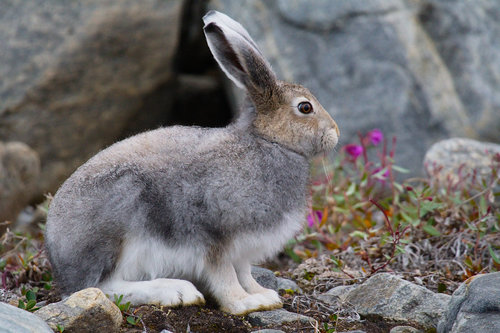
Arctic Hare
The Arctic hare, Lepus arcticus, thrives in frozen tundra landscapes with its thick white coat and strong hind legs. Renowned for its solitary resilience, it plays a crucial role in its ecosystem by maintaining the balance between predator and prey in the harsh Arctic environment.
3-8 years
Lifespan
45387.0 kg
Weight
Length: 48 - 67 cm
Size
Grey, White
Color
40 mph
Top Speed
Least Concern
Conservation Status
Unknown
Population Trend
Characteristics
Lepus arcticus, known as the Arctic hare, is adapted to frigid tundra climates. It possesses thick white fur for insulation and camouflage, powerful hind legs for rapid movement, and a compact body shape to conserve heat. This hare is known for its solitary nature and remarkable ability to survive harsh Arctic winters.
Distribution Range of the Arctic Hare
The Arctic hare (Lepus arcticus) is native to the Arctic regions of North America. Its geographical distribution includes northern Canada, parts of Greenland, and some Arctic islands. Specifically, it can be found in the tundra regions of Nunavut, the Northwest Territories, and Quebec in Canada.
Arctic Hare's Habitat
Environmental Conditions
Arctic hares inhabit cold, harsh environments characterized by tundra ecosystems. These areas experience extreme cold temperatures, strong winds, and significant seasonal variations in daylight. The ground is typically covered with snow and ice for most of the year, with brief summers featuring low-growing vegetation.
Ecological Niche
Arctic hares are well-adapted to life in the tundra. They occupy ecological niches that involve grazing on woody plants, mosses, and lichens. Their adaptations include thick fur for insulation, strong legs for digging through snow to find food, and the ability to change fur color seasonally for camouflage. They are prey for predators such as Arctic foxes, wolves, and birds of prey, playing a critical role in the Arctic food web.
Copyright @ Nature Style Limited. All Rights Reserved.
 English
English